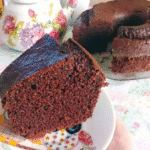Introduction
As the holiday season approaches, one can almost smell the aroma of freshly baked goods filling the air. Christmas, known as the most magical time of the year, brings with it a myriad of traditions, and among them, the tradition of baking special bread holds a significant place. Christmas breads are not just culinary delights; they are embodiments of cultural heritage, familial ties, and the spirit of sharing. This essay delves into the rich history, diverse varieties, and cultural significance of Christmas breads around the world.
Historical Origins of Christmas Breads
The tradition of baking special bread for Christmas can be traced back to ancient times when various cultures celebrated winter solstice festivals with rituals involving bread offerings. In Europe, the custom of baking Christmas breads became intertwined with Christian traditions during the Middle Ages. The bread, often enriched with fruits, nuts, and spices, symbolized abundance and prosperity during the festive season.
According to culinary historians, the earliest documented reference to Christmas bread dates back to the Roman Empire, where a type of sweet bread called “panettone” was consumed during Saturnalia, a winter solstice festival. Over time, as Christianity spread across Europe, different regions developed their own versions of Christmas breads, incorporating local ingredients and culinary techniques.
Varieties of Christmas Breads
Panettone (Italy)
Panettone, perhaps one of the most famous Christmas breads worldwide, originates from Milan, Italy. This dome-shaped sweet bread is made with a rich dough containing candied fruits, raisins, and citrus zest. It is traditionally enjoyed sliced, accompanied by a glass of sweet wine or hot chocolate. Panettone has become so popular that it is now exported and enjoyed in many parts of the world during the holiday season.
According to Di Palo’s Guide to the Essential Foods of Italy by Lou Di Palo, panettone is deeply rooted in Italian culinary tradition:
“Panettone is not just a bread; it is a symbol of Italian craftsmanship and dedication to quality ingredients. Each loaf is a testament to centuries of tradition and artistry.”
Stollen (Germany)
Stollen, also known as Christstollen or Weihnachtsstollen, is a traditional German fruit bread that is synonymous with Christmas celebrations in Germany. Originating from Dresden, Stollen is a dense, fruit-filled bread enriched with almonds, candied citrus peel, and spices such as cinnamon and cardamom. It is typically dusted with powdered sugar, resembling the powdered snow of winter.
In his book German Baking: The Taste of German Tradition by Luisa Weiss, the author discusses the cultural significance of Stollen:
“Stollen is not just a bread in Germany; it is a symbol of resilience and hope. Its history, dating back to the 15th century, reflects the perseverance of the German people through times of hardship and scarcity.”
Rosca de Reyes (Mexico)
Rosca de Reyes, also known as Three Kings Bread, is a traditional Mexican sweet bread served on January 6th to commemorate the Epiphany, the day the Three Wise Men visited the infant Jesus. This oval-shaped bread is adorned with candied fruit and sometimes filled with cream cheese or sweet custard. A small figurine of baby Jesus is hidden inside the bread, and whoever finds it is responsible for hosting a celebration on Candlemas Day, February 2nd.
In her book My Sweet Mexico: Recipes for Authentic Pastries, Breads, Candies, Beverages, and Frozen Treats by Fany Gerson, the author explains the cultural significance of Rosca de Reyes:
“Rosca de Reyes is not just a bread; it is a symbol of community and faith in Mexico. Families gather around the table to share this sweet treat and partake in the tradition of finding the hidden figurine, fostering bonds of friendship and camaraderie.”
Cultural Significance of Christmas Breads
Christmas breads hold immense cultural significance beyond their culinary appeal. They serve as symbols of heritage, tradition, and community, bringing people together in celebration and reflection during the holiday season.
In many cultures, the act of baking Christmas breads is a communal activity that involves multiple generations coming together to prepare and share recipes that have been passed down through families for generations. This tradition not only preserves culinary heritage but also strengthens familial bonds and fosters a sense of belonging and continuity.
Moreover, Christmas breads often incorporate ingredients that are symbolic of the season. Fruits such as raisins, figs, and dates represent the abundance of the harvest season, while spices such as cinnamon, nutmeg, and cloves evoke the warmth and comfort of winter. By incorporating these ingredients into their recipes, bakers infuse their breads with layers of meaning and tradition that resonate with their cultural identity.
Exploring Fascinating Facts About Christmas Breads
Christmas breads are more than just delicious treats enjoyed during the holiday season; they are rich in history, tradition, and cultural significance. From the iconic panettone of Italy to the sweet Stollen of Germany, these festive loaves have fascinating stories behind them. Let’s delve into some intriguing facts about Christmas breads from around the world.
1. Panettone: A Symbol of Milanese Ingenuity
Panettone, originating from Milan, Italy, is perhaps one of the most renowned Christmas breads worldwide. Legend has it that panettone was created by a young Milanese baker named Toni, who added raisins, candied fruit, and citrus zest to a simple bread dough, resulting in a sumptuously sweet loaf. Over time, panettone became synonymous with Christmas celebrations in Italy and beyond, symbolizing the spirit of generosity and craftsmanship.
2. Stollen: A Taste of German Tradition
Stollen, also known as Christstollen or Weihnachtsstollen, has been a beloved Christmas tradition in Germany for centuries. One of the most fascinating facts about Stollen is its historical significance during times of hardship. In the 15th century, Elector Ernst of Saxony petitioned the Pope for permission to use butter during Advent, citing the economic struggles of his people. The Pope granted his request, leading to the creation of the rich, buttery Stollen that we know today.
3. Rosca de Reyes: A Mexican Epiphany Treat
Rosca de Reyes, or Three Kings Bread, is a traditional Mexican sweet bread enjoyed on January 6th to celebrate the Epiphany. One of the most intriguing aspects of Rosca de Reyes is the inclusion of hidden figurines inside the bread. These figurines, representing the baby Jesus, symbolize the journey of the Three Wise Men to visit the infant Christ. Finding the figurine in your slice of Rosca de Reyes not only brings good luck but also carries the responsibility of hosting a celebration on Candlemas Day.
4. Christopsomo: The Christ Bread of Greece
In Greece, Christmas is celebrated with a special bread known as Christopsomo, or Christ Bread. This enriched loaf is adorned with religious symbols such as crosses and often decorated with almonds or sesame seeds. One fascinating tradition associated with Christopsomo is the custom of making a sign of the cross over the bread before slicing it, symbolizing blessings for the household and its guests.
5. Julekake: A Norwegian Christmas Staple
Julekake, or Christmas Cake, is a traditional Norwegian bread enjoyed during the holiday season. What makes Julekake unique is its incorporation of cardamom, a fragrant spice that adds depth of flavor to the loaf. In Norway, it is customary to serve Julekake sliced thinly and spread with butter, accompanied by a hot cup of coffee or mulled wine. This festive bread is a symbol of warmth and hospitality during the long winter months.
6. Pannetone: A Brazilian Twist on an Italian Classic
In Brazil, the influence of Italian immigrants has led to the adaptation of panettone into a uniquely Brazilian Christmas tradition. Brazilian panettone is often filled with tropical fruits such as guava and passion fruit, giving it a distinct flavor profile. Additionally, Brazilians enjoy panettone throughout the holiday season, often incorporating it into desserts such as panettone trifle or panettone bread pudding.
7. Vánočka: The Czech Christmas Braid
Vánočka, a braided Christmas bread from the Czech Republic, is a symbol of prosperity and unity. Traditionally, vánočka is braided with three strands of dough, symbolizing the Holy Trinity. One interesting fact about vánočka is its intricate braiding technique, which requires skill and patience to achieve the perfect loaf. In the Czech Republic, vánočka is often served on Christmas Eve as part of the festive feast.
8. Kozunak: The Bulgarian Easter Bread with a Christmas Twist
Kozunak, a sweet bread enjoyed during Easter in Bulgaria, also makes an appearance during the Christmas season. This rich, brioche-like bread is studded with raisins and flavored with vanilla and citrus zest. One curious fact about Kozunak is the tradition of making wishes while kneading the dough. It is believed that the positive energy infused into the dough during the kneading process will bring good fortune in the coming year.
9. Pampushky: Ukrainian Christmas Doughnuts
In Ukraine, Christmas is celebrated with a variety of traditional dishes, including the sweet and pillowy pampushky. These fried doughnuts are often filled with fruit preserves or sweetened poppy seed paste and dusted with powdered sugar. One delightful fact about pampushky is their association with the Ukrainian Christmas Eve supper, where they are served alongside other festive dishes such as kutia (sweet grain pudding) and borscht.
10. Kūčiukai: Lithuanian Christmas Cookies with a Symbolic Twist
Kūčiukai are small, sweet pastries enjoyed during the Christmas season in Lithuania. These bite-sized treats are made from yeasted dough and typically served with poppy seed milk or honey. One intriguing fact about kūčiukai is their symbolic significance. Legend has it that the number of kūčiukai consumed on Christmas Eve will determine the level of prosperity in the household for the coming year, making them a cherished part of Lithuanian holiday traditions.
Christmas breads are not only delicious treats but also windows into the rich tapestry of cultural traditions and customs around the world. From the sweet panettone of Italy to the symbolic Rosca de Reyes of Mexico, each variety of Christmas bread carries with it centuries of history and tradition. As we gather with loved ones to celebrate the holiday season, let us savor these festive loaves and appreciate the stories they tell.
Conclusion
In conclusion, Christmas breads are more than just delicious treats; they are embodiments of cultural heritage, familial ties, and the spirit of sharing. From the iconic panettone of Italy to the symbolic Rosca de Reyes of Mexico, each variety of Christmas bread tells a story of tradition, resilience, and community. As we celebrate the most magical time of the year, let us not forget the rich history and cultural significance of these beloved culinary delights that bring joy and warmth to our homes and hearts.





